The Glory of Africa Part 12
As we live near the quarter-century mark of this new 21st century, we witness a new era of our time. I first started this series in 2009 and now 15 years later, my core convictions remain the same. Also, we realize the massive importance of Africa in our lives and our consciousness. Ever since I was a young child, I always took a great interest in the culture and diverse human beings of Africa. Africa is filled with thousands of languages, tons of ethnic groups, a diverse history, and it is the origin of all human life. There are many misconceptions and false stereotypes that some people have of Africa. One false misconception is that all of Africa is filled with stereotypical images of jungles with lax civilizations. The truth is that modern technological achievements flourish in Africa like next-generation laptop computers, light rail, aircraft, smartphone devices, and a new generation of Africans who are dedicated to justice in a forthright, humble fashion. Thousands of years ago, the first humans lived in Africa. They traveled throughout the whole world from the Americas to Antarctica. In that time period, we humans have made inventions, traveled to the Moon and back to Earth, and solved many problems of the globe. Not to mention that Africa is a blessed land with some of the most spiritual people on Earth. Like always, problems exist in Africa, but we have the power to solve these issues with creative thinking along with progressive solutions to those issues. I am an African American, so my black African heritage will always be part of my physical appearance, my DNA, and my overall heritage. Us black people deserve our flowers, not from people who hate our existence. We will honor our flowers given to us by people who love us. This black soul among my people ultimately comes from ALMIGHTY GOD, who created the Universe. Today, the Glory of Africa shines bright for the whole Universe to witness in a brilliant fashion.
The Mali Empire
One of the most important parts of black African history deals with the Mali Empire. It has a long important history that should be researched, analyzed, and learn lessons from. The empire lasted by ca. 1226 to 1670 A.D. It was founded by Sundiata Keita (ca. 1214-ca. 1255 A.D.). Many people know about the wealth of its rulers, especially Mansa Musa (Musa Keita). It was the largest empire in West Africa at its zenith. It influenced Western Africa in its language, laws, and customs. The Mali Empire started a small Mandinka kingdom at the upper reaches of the Niger River, around the Manding region. It grew during the 11th and 12th centuries as the Ghana Empire or Wagadu. Wagadu declined and trade routes shifted southward. The first ruler for which there is accurate written information is Sundiata Keita, a warrior-prince of the Keita dynasty who was called upon to free the local people from the rule of the king of the Sosso Empire, Soumaoro Kanté. The conquest of Sosso in c. 1235 marked the emergence of Mali as a major power. After the death of Sundiata Keita in ca. 1255, the kings ruling Mali had the title of mansa. In c. 1285 Sakoura, a former royal court slave, became emperor and was one of Mali's most powerful rulers, greatly expanding the empire's territory. He made a pilgrimage to Mecca during the reign of Mamluk Sultan An-Nasir Muhammad (r. 1298–1308) but died on his voyage home. Mansa Musa took the throne in c. 1312. He made a famous pilgrimage to Mecca from 1324 to 1326, where his generous gifts and his expenditure of gold caused significant inflation in Egypt. The languages spoken in the Mali Empire were Mandinka, Fulani, Wolof, and Bambara. Many black Americans are descendants from people of the Mali Empire.
Maghan I succeeded him as mansa in 1337 but was deposed by his uncle Suleyman in 1341. It was during Suleyman's 19-year reign that Ibn Battuta visited Mali. Suleyman's death marked the end of Mali's Golden Age and the beginning of a slow decline. The Tarikh al-Sudan records that Mali was still a sizeable state in the 15th century. At that time, the Venetian explorer Alvise Cadamosto and Portuguese traders confirmed that the peoples who settled within Gambia River were still subject to the mansa of Mali. Upon Leo Africanus's visit at the beginning of the 16th century, his descriptions of the territorial domains of Mali showed that it was still a kingdom of considerable size. However, from 1507 onwards neighboring states such as Diarra, Great Fulo, and the Songhai Empire chipped away at Mali's borders. In 1542, the Songhai invaded the capital but were unsuccessful in conquering the empire. During the 17th century, the Mali Empire faced incursions from the Bamana Empire, who ultimately sacked and burned the capital in 1670. The Mali Empire rapidly disintegrated, being replaced by independent chiefdoms. The Keitas retreated to the town of Kangaba, where they became provincial chiefs.
Ancient Egypt
Ancient Egypt is an ancient civilization found on the Nile River being an African civilization. Egypt is part of Africa, regardless of what any revisionists say. It lasted from ca. 3150 B.C. to 30 B.C. Its history has been filled with research and a constant contribution to humanity like STEM fields, cuisine, fashion, architecture, writing, music, spiritual views, medicine, literature, etc. The civilization developed in the Nile River. The ancient Egyptian Empire by the New Kingdom expanded to Nubia and much of the Levant at its peak before having its slow decline. Ancient Egypt survived by having its ability to adapt to the conditions of the Nile River valley for agriculture, trade, and transportation. The flooding caused people to adjust their crops and develop their irrigation systems to make their lands more fertile. Ancient Egyptian History has many eras like Early Dynastic Period, the Old Kingdom, the First Intermediate Period, the Middle Kingdom, the Second Intermediate Period, the New Kingdom (at its peak), the Third Intermediate Period, and the Late Period. The fertile floodplain caused people to have an agricultural economy and a centralized system of government. Nomadic people lived in the Nile valley about 120,000 years ago during the Middle Pleistocene era. The region became hotter and drier and people lived in the Nile River. During the Pre-Dynastic period, there was pottery in 5,500 B.C. along with the Badarian culture that came from the Western Desert with ceramics of high quality, stone tools, and usage of cooper. Recent archaeological evidence has suggested that the Tasian and Badarian Nile Valley sites were a peripheral network of earlier Northeast African cultures that featured the movement of Badarian, Saharan, Nubian, and Nilotic populations.
Later, ancient Egypt saw the Naqada culture (from Naqada I to Naqada III). There was obsidian that came from Ethiopia and trade with the Levant and Mesopotamia in general during the 3600's B.C. The Nagada culture (filled with decorative stone vases, cosmetic palettes, jewelry, and writing symbols that would evolve into the full system of hieroglyphs) traded with Nubia, the Near East, and the cultures of the eastern Mediterranean. The Early Dynastic Period of ancient Egypt lasted from cs. 3150 B.C. to 2686 B.C. This was the time when the Sumerian Akkadian cultures of Mesopotamia and ancient Elam were growing. According to third-century Egyptian priest Mantheo, the first King of this Dynasty was Menes (who was believed to have united the two Kingdoms of Upper and Lower Egypt). Menes may be King Narmer. By this time, the capital of ancient Egypt was in the prominent city of Memphis. Ancient Egypt had pharaohs, labor power, and trade routes to the Levant. The strong institution of kingship developed by the kings served to legitimize state control over the land, labor, and resources that were essential to the survival and growth of ancient Egyptian civilization. The Old Kingdom from 2686 to 2181 B.C. saw tons of huge advances in architecture, art, and technology. The Great Pyramids of Giza and The Great Sphinx were created during the Old Kingdom. The Old Kingdom saw the vizier using state officials to collect taxes, handle crops, work on construction projects via peasants, and have a justice system to have peace and order.
With the rising importance of central administration in Egypt, a new class of educated scribes and officials arose who were granted estates by the king in payment for their services. Kings also made land grants to their mortuary cults and local temples, to ensure that these institutions had the resources to worship the king after his death. Scholars believe that five centuries of these practices slowly eroded the economic vitality of Egypt and that the economy could no longer afford to support a large, centralized administration. As the power of the kings diminished, regional governors called nomarchs began to challenge the supremacy of the office of king. This, coupled with severe droughts between 2200 and 2150 BC, is believed to have caused the country to enter the 140 years of famine and strife known as the First Intermediate Period. This period saw Egypt's central government gone. Local rulers existed to deal with resources and provinces became richer. By 2160 BC, rulers in Herakleopolis controlled Lower Egypt in the north, while a rival clan based in Thebes, the Intef family, took control of Upper Egypt in the south. As the Intefs grew in power and expanded their control northward, a clash between the two rival dynasties became inevitable. Around 2055 BC the northern Theban forces under Nebhepetre Mentuhotep II finally defeated the Herakleopolitan rulers, reuniting the Two Lands. They inaugurated a period of economic and cultural renaissance known as the Middle Kingdom (which lasted from 2134 to 1690 B.C.). The Middle Kingdom saw a new era of stability, prosperity, and the growth of culture (like art, literature, and large building projects).
Mentuhotep II and his Eleventh Dynasty successors ruled from Thebes, but the vizier Amenemhat I, upon assuming the kingship at the beginning of the Twelfth Dynasty around 1985 BC, shifted the kingdom's capital to the city of Itjtawy, located in Faiyum. From Itjtawy, the kings of the Twelfth Dynasty undertook a far-sighted land reclamation and irrigation scheme to increase agricultural output in the region. Moreover, the military reconquered territory in Nubia that was rich in quarries and gold mines, while laborers built a defensive structure in the Eastern Delta, called the "Walls of the Ruler", to defend against foreign attack. The Middle Kingdom focused on eloquent literature, personal piety, and new relief sculptures.
The last great ruler of the Middle Kingdom, Amenemhat III, allowed Semitic-speaking Canaanite settlers from the Near East into the Delta region to provide a sufficient labor force for his especially active mining and building campaigns. These ambitious building and mining activities, however, combined with severe Nile floods later in his reign, strained the economy and precipitated the slow decline into the Second Intermediate Period during the later Thirteenth and Fourteenth dynasties. During this decline, the Canaanite settlers began to assume greater control of the Delta region, eventually coming to power in Egypt as the Hyksos. The Hyksos were Semitic people who ruled Egypt during the Second Intermediate Period. They made their capital at Avaris. The ancient Egyptians paid tribute to the Hyksos. They used the composite bow and the horse-drawn chariot. The Theban Kings were trapped between the Canaanite Hyksos ruling the north and the Hyksos' Nubian allies, the Kushites, to the south. After years of vassalage, Thebes gathered enough strength to challenge the Hyksos in a conflict that lasted more than 30 years, until 1555 BC. The kings Seqenenre Tao II and Kamose were ultimately able to defeat the Nubians to the south of Egypt, but failed to defeat the Hyksos. That task fell to Kamose's successor, Ahmose I, who successfully waged a series of campaigns that permanently eradicated the Hyksos' presence in Egypt. He established a new dynasty and, in the New Kingdom that followed, the military became a central priority for the kings, who sought to expand Egypt's borders and attempted to gain mastery of the Near East.
The New Kingdom was during the peak of the ancient Egypt civilization. The New Kingdom pharaohs established a period of unprecedented prosperity by securing their borders and strengthening diplomatic ties with their neighbors, including the Mitanni Empire, Assyria, and Canaan. Military campaigns waged under Tuthmosis I and his grandson Tuthmosis III extended the influence of the pharaohs to the largest empire Egypt had ever seen. Beginning with Merneptah the rulers of Egypt adopted the title of pharaoh. Between their reigns, Hatshepsut, a queen who established herself as pharaoh, launched many building projects, including the restoration of temples damaged by the Hyksos, and sent trading expeditions to Punt and the Sinai. When Tuthmosis III died in 1425 BC, Egypt had an empire extending from Niya in northwest Syria to the Fourth Cataract of the Nile in Nubia, cementing loyalties and opening access to critical imports such as bronze and wood. The New Kingdom pharaohs began a large-scale building campaign to promote the god Amun, whose growing cult was based in Karnak. They also constructed monuments to glorify their own achievements, both real and imagined. The Karnak temple is the largest Egyptian temple ever built.
Around 1350 BC, the stability of the New Kingdom was threatened when Amenhotep IV ascended the throne and instituted a series of radical and new reforms. Changing his name to Akhenaten, he touted the previously obscure sun deity Aten as the supreme deity, suppressed the worship of most other deities, and moved the capital to the new city of Akhenaten (modern-day Amarna). He was devoted to his new religion and artistic style. Basically, Akhenaten was a monotheist. After his death, the cult of the Aten was quickly abandoned, and the traditional religious order restored. The subsequent pharaohs, Tutankhamun, Ay, and Horemheb, worked to erase all mention of Akhenaten's spiritual views, now known as the Amarna Period. Around 1279 BC, Ramesses II, also known as Ramesses the Great, ascended the throne, and went on to build more temples, erect more statues and obelisks, and sire more children than any other pharaoh in history. A bold military leader, Ramesses II led his army against the Hittites in the Battle of Kadesh (in modern Syria) and, after fighting to a stalemate, finally agreed to the first recorded peace treaty, around 1258 BC. The Hittites originated from modern day Turkey. The ancient Egyptian leaders wanted to expand. Yet, they faced the Libyan Berbers, the Sea Peoples, and others in the Aegean Sea. Egypt lost lands in southern Canaan to the Assyrians, there was civil unrest, tomb robbery, and corruption. After regaining their power, the high priests at the temple of Amun in Thebes accumulated vast tracts of land and wealth, and their expanded power splintered the country during the Third Intermediate Period.
Following the death of Ramesses XI in 1078 BC, Smendes assumed authority over the northern part of Egypt, ruling from the city of Tanis. The south was effectively controlled by the High Priests of Amun at Thebes, who recognized Smendes in name only. This Third Intermediate Period lasted from 1069 to 653 B.C. During this time, Libyans had been settling in the western delta, and chieftains of these settlers began increasing their autonomy. Libyan princes took control of the delta under Shoshenq I in 945 BC, founding the so-called Libyan or Bubastite dynasty that would rule for some 200 years. Shoshenq also gained control of southern Egypt by placing his family members in important priestly positions. Libyan control began to erode as a rival dynasty in the delta arose in Leontopolis, and Kushites threatened from the south.
Around 727 BC the Kushite king Piye invaded northward, seizing control of Thebes and eventually the Delta, which established the 25th Dynasty. During the 25th Dynasty, Pharaoh Taharqa created an empire nearly as large as the New Kingdom's. The name of Taharqa is mentioned in the Bible too. Twenty-fifth Dynasty pharaohs built, or restored, temples and monuments throughout the Nile valley, including at Memphis, Karnak, Kawa, and Jebel Barkal. During this period, the Nile valley saw the first widespread construction of pyramids (many in modern Sudan) since the Middle Kingdom.
Egypt's far-reaching prestige declined considerably toward the end of the Third Intermediate Period. Its foreign allies had fallen under the Assyrian sphere of influence, and by 700 B.C. war between the two states became inevitable. Between 671 and 667 BC, the Assyrians began the Assyrian conquest of Egypt. The reigns of both Taharqa and his successor, Tanutamun, were filled with constant conflict with the Assyrians, against whom Egypt enjoyed several victories. Ultimately, the Assyrians pushed the Kushites back into Nubia, occupied Memphis, and sacked the temples of Thebes. The late period saw ancient Egypt ruled by the Assyrians. Saite kings of the 26th Dynasty were allowed to rule. By 653 BC, the Saite king Psamtik I was able to oust the Assyrians with the help of Greek mercenaries, who were recruited to form Egypt's first navy. Greek influence expanded greatly as the city-state of Naucratis became the home of Greeks in the Nile Delta. The Saite kings based in the new capital of Sais witnessed a brief but spirited resurgence in the economy and culture, but in 525 BC, the powerful Persians, led by Cambyses II, began their conquest of Egypt, eventually capturing the pharaoh Psamtik III at the Battle of Pelusium. Cambyses II then assumed the formal title of pharaoh, but ruled Egypt from Iran, leaving Egypt under the control of a satrap. A few successful revolts against the Persians marked the 5th century BC, but Egypt was never able to permanently overthrow the Persians.
Following its annexation by Persia, Egypt was joined with Cyprus and Phoenicia in the sixth satrapy of the Achaemenid Persian Empire. This first period of Persian rule over Egypt, also known as the Twenty-Seventh Dynasty, ended in 402 B.C., when Egypt regained independence under a series of native dynasties. The last of these dynasties, the Thirtieth, proved to be the last native royal house of ancient Egypt, ending with the kingship of Nectanebo II. A brief restoration of Persian rule, sometimes known as the Thirty-First Dynasty, began in 343 BC, but shortly after, in 332 BC, the Persian ruler Mazaces handed Egypt over to Alexander the Great without a fight.
In 332 BC, Alexander the Great conquered Egypt with little resistance from the Persians and was welcomed by the Egyptians as a deliverer. The administration established by Alexander's successors, the Macedonian Ptolemaic Kingdom, was based on an Egyptian model and based in the new capital city of Alexandria. The city showcased the power and prestige of Hellenistic rule, and became a center of learning and culture, that included the famous Library of Alexandria as part of the Mouseion. The Lighthouse of Alexandria lit the way for the many ships that kept trade flowing through the city—as the Ptolemies made commerce and revenue-generating enterprises, such as papyrus manufacturing, their top priority. Hellenistic culture did not supplant native Egyptian culture, as the Ptolemies supported time-honored traditions in an effort to secure the loyalty of the populace. They built new temples in Egyptian style, supported traditional cults, and portrayed themselves as pharaohs. Some traditions merged, as Greek and Egyptian gods were syncretized into composite deities, such as Serapis, and classical Greek forms of sculpture influenced traditional Egyptian motifs. Despite their efforts to appease the Egyptians, the Ptolemies were challenged by native rebellion, bitter family rivalries, and the powerful mob of Alexandria that formed after the death of Ptolemy IV.
In addition, as Rome relied more heavily on imports of grain from Egypt, the Romans took great interest in the political situation in the country. Continued Egyptian revolts, ambitious politicians, and powerful opponents from the Near East made this situation unstable, leading Rome to send forces to secure the country as a province of its empire. Ancient Rome ruled ancient Egypt by 30 B.C. after the defeat of Mark Antony and Ptolemaic Queen Cleopatra VII by Octavian (who is Emperor Augustus) via the Batte of Actium. Alexandria flourished. There were mummies of many ancient Egyptians continuing during the Roman Empire era. By the mid-first century, A.D., Christianity existed in ancient Egypt. Christians were severely persecuted (by Roman Emperor Diocletian and others) and then Christianity was supported by Christian emperor Theodosius. Egypt became part of the Eastern Roman Empire whose capital was in Constantinople. Then, Egypt was ruled by the Sasanian Persian Army by the 600's. A.D., ruled by Byzantine Emperor Heraclius, and ruled by the Muslim Rashidun army 639-641 A.D. Ancient Egypt ended by this time.
60 Years After Freedom Summer
One of the important events of the Civil Rights Movement and the overall black freedom struggle was the 1964 Freedom Summer Project. It was a movement that was after the 1963 Birmingham Movement and before the Selma movement of 1965. It was near the end of the old-school era of the civil rights movement filled with organization, planning, setbacks, and lessons learned. Freedom Summer isn't known by many human beings, but I know about its history including other people. The goal of Freedom Summer was very clear to be a volunteer campaign (among black people and people of every color) to register as many African American voters as possible in the state of Mississippi. The ultimate goal was the abolishment of Jim Crow apartheid in America to make freedom and justice for all a clear reality. The project was a large undertaking being organized by the Council of Federated Organizations (COFO), which is a coalition of the Mississippi branches of the four major civil rights organizations (who are SNCC, CORE, NAACP, and SCLC). The vast majority of the organizers and powerbase of Freedom Summer obviously came from SNCC (the Student Nonviolent Coordinating Committee).
In fact, SNCC Field Secretary and co-director of COFO Bob Moses directed the Summer Project. Bob Moses was a civil rights leader who promoted mathematics in the community too with his Algebra Program along with opposing the Vietnam War during the early 1960's. The fundamental base of support for Freedom Summer was the thousands of African Americans with our churches, organizations, and homes to help people in Mississippi. Many non-black people sacrificed their lives to be involved in Freedom Summer too. Freedom Summer faced a far-right reactionary racist backlash by racists using extreme violence, murder, bombing of churches, kidnappings, and torture of black people and many non-black people too. Freedom Summer inspired the federal government to pass the Civil Rights Act of 1964 and the Voting Rights Act of 1965. Freedom Summer was a nonviolent effort, and the movement wanted African Americans in Mississippi to register to vote, have a new political party, and learn about real history and politics in newly formed Freedom Schools.
Freedom Summer was planned as early as late 1963. After the 1963 March on Washington, Mississippi was on the minds of many people. John Lewis or the Chairperson of SNCC during that time criticized the federal government for failing to protect the civil rights of Mississippi residents. The Director of SNCC Bob Moses proposed a Mississippi voter registration project to the SNCC executive committee by September 1963. The meeting lasted from September 6-9, 1963, being the origin of the Freedom Summer campaign. The meeting is discussed in Atlanta to have debates on voter registration vs. sit-ins and boycotts. By November 4, 1963, there is the Freedom Vote 1963. This was when more than 80,000 people had mock elections to refute the white racist lie that black Americans didn't want to vote. Dozens of white volunteers from Standford and Yale Universities came to help. There was press coverage of the effort that caused some to want to use white volunteers to cause the nation to focus on the injustices in Mississippi. Later, there was the four-day staff meeting in Greenville, Mississippi where SNCC debates brought 1,000 northern students to Mississippi during the next summer. Many staff are opposed to this idea fearing that it will undermine local black leadership. No decision is made during that meeting. There is the December 15, 1963, meeting at Jackson, Mississippi. COFO appointed Bob Moses its project director for voter registration and Dave Dennis assistant program director. During the December 31, 1963, SNCC Executive Committee Meetings, leaders finally endorsed a Mississippi Summer Project for 1964 including large numbers of northern white volunteers.
The planning continues. COFO on January 16, 1964, proposed challenging the right of any all-white delegation to represent Mississippi at the Democratic National Convention (DNC) to be held in Atlantic City, New Jersey, in August 1964. By January 22, 1964, there was the Hattiesburg Freedom Day when COFO helped 150 black residents of Hattiesburg, Mississippi, attempt to register to vote on 'Freedom Day.' Clergy from around the country assemble to support them. By January 31, the local NAACP organizer Louis Allen of Liberty, Mississippi was shot and killed because he supported voter registration efforts. This caused the remaining COFO leaders to support the Freedom Summer Project. COFO authorized the Freedom Summer Project by February 9, 1964. They want a large number of volunteers to help with the effort to make the federal government to pass voting rights legislation. By February 28, there was the Canton Freedom Day rally. This was in Canton, Mississippi when COFO helped more than 300 black citizens to line up at the county courthouse to register to vote. There was no violence. They were guarded by the police with shotguns and tear gas. It is the state's largest voter registration attempt up to that time. Later, SNCC promoted a brochure about the movement in an 8 page fundraising brochure. So, the action of advertising and organization continued like COFO showing a one page press release on March 30, 1964. From March to April 1964, volunteers are invited to work in Mississippi for the Freedom Summer movement. During this time, COFO appealed to local black residents for help in hosting and supporting volunteers. COFO assigned volunteers at various sites.
The enemies of democracy responded to these developments by the Mississippi legislature passing new laws to that restricted picketing and leafleting and expanded police authority to intervene. On April 12, 1964, COFO announced black candidates to enter the Mississippi Democratic Party nominating process and, knowing they'll be excluded, also run in a parallel 'Freedom Vote' in November. COFO interviewed volunteers who want to come to Mississippi to help with voter registration or teach in Freedom School. The Mississippi Freedom Democratic Party was created at the convention in Jackson, Mississippi on April 26, 1964. As expected, black residents are barred from participating in the Mississippi Democratic Party's local meetings to choose candidates and convention delegates. They hold parallel Mississippi Freedom Democratic Party (MFDP) meetings and choose their own.
SNCC recruiters didn't want volunteers with a John Brown complex. That means that SNCC leaders didn't want volunteers to think that it's their job to save Mississippi black Americans but to work with local leadership to develop the grassroots movement. SNCC is all about grassroots organizing and building as mentioned by Ella Baker (who is the Mother of SNCC).
By May 5, Freedom Summer Project volunteers are confirmed by receiving acceptance letters (and how to prepare for their roles in Freedom Summer). The volunteers are trained at Western College for Women in Oxford, Ohio, sponsored by the National Council of Churches. The first group attended workshops until June 20. A second session ran on June 21-28. One turning point of Freedom Summer was on June 21, 1964. This was when 3 Freedom Summer Project workers, whose names are James Chaney, Andrew Goodman, and Mickey Schwerner left the Ohio training a day early are reported missing. They had gone to Longdale, Mississippi, to investigate the bombing of Mt. Zion Church, which had offered to host a Freedom School. They were arrested in Philadelphia, Mississippi, on their way back to the COFO office in Meridian and were never heard from again. Now, we know that they were murdered by racists.
By June 29, 1964, we saw the Freedom Summer project established. There are about 500 volunteers and staff at 25 locations around the state at the start. Later, more than 1,000 out-of-state volunteers participated in Freedom Summer alongside thousands of black Mississippians. Volunteers were among the most educated of their generation, who came from the best universities in the biggest states, mostly from cities in the North (e.g., Chicago, New York City, Detroit, Cleveland, etc.) and West (e.g., Berkeley, Los Angeles, Portland, Seattle, etc.), usually were rich, 90 percent were white. About half of them were Jewish. Though SNCC's committee agreed to recruit only one hundred white students for the project in December 1963, white civil rights leaders such as Allard Lowenstein went on and recruited a much larger number of white volunteers, to bring more attention. Two one-week orientation sessions for the volunteers were held at Western College for Women in Oxford, Ohio (now part of Miami University), from June 14 to June 27, after Berea College backed out of hosting the sessions due to alumni pressure against it. Organizers focused on Mississippi because it had the lowest percentage of any state in the country of African Americans registered to vote, and they constituted more than one-third of the population. In 1962 only 6.7% of eligible black voters were registered. Back then, Southern states had poll taxes and literary tests to deprive black Americans the right to vote.
More than 100 volunteer doctors, nurses, psychologists, medical students, and other medical professionals from the Medical Committee for Human Rights (MCHR) provided emergency care for volunteers and local activists, taught health education classes, and advocated improvements in Mississippi's segregated health system. Volunteer lawyers from the NAACP Legal Defense Fund Inc ("Ink Fund"), National Lawyers Guild, Lawyer's Constitutional Defense Committee (LCDC) an arm of the ACLU, and the Lawyers' Committee for Civil Rights Under Law (LCCR) provided free legal services — handling arrests, freedom of speech, voter registration and other matters.
The Commission on Religion and Race (CORR), an endeavor of the National Council of Churches (NCC), brought Christian and Jewish clergy and divinity students to Mississippi to support the work of the Summer Project. In addition to offering traditional religious support to volunteers and activists, the ministers and rabbis engaged in voting rights protests at courthouses, recruited voter applicants and accompanied them to register, taught in Freedom Schools, and performed office and other support functions.
Violence against the movement continued. Racists did drive by shooting, threw Molotov cocktails at host homes, and the state and local government abused people (by arson, beatings, evictions, firings, murder, spying, and other types of intimidation). The Mississippi State Sovereignty Commission spied on people and worked with the police, the Klan, and the White's Citizens' Council to use terrorism against black people. By Late June, there are more than 40 incidents of harassment and violence occurred around the state during the last two weeks in June. By July 1, 1964, Mississippi has had five bombings, four murders, and numerous shootings of civil rights workers. The Society Hill Baptist Church was bombed on September 20, 1964, because it was one site of the Freedom School. In 1964, 36 black churches were bombed in Mississippi alone. The First Freedom Schools open up on July 2, 1964. It was located in the cities of Clarksdale, Holly Springs, and Vicksburg in Mississippi. The 1964 Civil Rights Act was signed on July 2, 1964, banning discrimination involving public accommodations. Martin Luther King visited the Mississippi cities of Jackson and Vicksburg to show his support for the Freedom Summer Project on July 22, 1964. On August 4, 1964, the bodies of Chaney, Goodman, and Schwerner were found buried in an earthen dam on a farm outside Philadelphia, Mississippi. Local police had released the three young men to the Ku Klux Klan, who tortured and murdered them before burning their car and hiding their bodies. Freedom Summer brought awareness to the oppression found in the South although not many black people were registered to vote during that time.
Approximately fifty Freedom libraries were established throughout Mississippi. These libraries provided library services and literacy guidance for many African Americans, some who had never had access to libraries before. Freedom Libraries ranged in size from a few hundred volumes to more than 20,000. The Freedom Libraries operated on small budgets and were usually run by volunteers. Some libraries were housed in newly constructed facilities while others were located in abandoned buildings. Freedom Houses helped to house volunteers in Mississippi.
By August 1964, the Mississippi state convention in Jackson, Mississippi, elects delegates to attend the Democratic National Convention (DNC) to be held in Atlantic City, New Jersey, in August 1964. They hoped to unseat the all-white delegation sent by the mainstream Mississippi Democratic Party. A statewide Freedom School convention is held in Meridian, Mississippi. Students from around the state review the summer's accomplishments and draft resolutions by August 8. By August 22, 1964, the Democratic National Convention was held in Atlantic City, New Jersey, delegates from the Mississippi Democratic Freedom Party challenged the right of delegates from the segregated mainstream Mississippi Democratic Party to represent the state. Their testimony about conditions in Mississippi is broadcast on national television and hundreds of supporters demonstrate outside the convention hall. Democratic National Convention (DNC) officials reject their challenge and they are not seated. Fannie Lou Hamer gave a passionate speech to condemn the political establishment in depriving black people the right to vote and economic rights in Mississippi on national television. After this incident, SNCC increasingly goes outside of the political establishment to seek justice for all. In McComb, Mississippi, nine black homes, churches, and businesses were firebombed over the course of three weeks from August to September 1964. The Freedom Schools operated on a basis of close interaction and mutual trust between teachers and students. The core curriculum focused on basic literacy and arithmetic, black history and current status, political processes, civil rights, and the freedom movement. The content varied from place to place and day to day according to the questions and interests of the students.
Entertainer and civil rights supporter Harry Belafonte took the exhausted Freedom Summer leaders to Africa. For some of the African Americans, it is the first time they see black people in leadership positions in government and the professions. The trip helps the project leaders connect their work to the struggles of the African black liberation movement and energizes them for further work upon their return to the United States. This happened in September 1964. There was the Freedom Vote held on October 31. The reason is because most black Mississippians have not been allowed to vote in the official election, Freedom Summer Project leaders organized the 1964 'Freedom Vote.' This parallel election was held from October 31 through November 2, 1964, during which more than 68,000 people cast their votes. This proves to political leaders that African Americans will be an important constituency to address after the barriers to their participation have fallen. Lyndon Baines Johnson won re-elected by November 3, 1964, and white racists won Mississippi's five congressional seats. MFDP challenges the right of the five white congressional representatives elected in November to take their seats, on the grounds that blacks were systematically excluded from voting. After nine months of legal and political wrangling, the U.S. House of Representatives rejected the challenge in September 1965.
By January 16, 1965, the FBI indicted 18 murder suspects in the murders of Chaney, Goodman, and Schwerner. Local officials immediately drop all charges but, under federal pressure, the men are re-charged the next month. Seven were found guilty when legal proceedings ended in 1967. By August 6, 1965, the Voting Rights Act was signed into law. Dr. Martin Luther King Jr., Rosa Parks, and other civil rights leaders were there when the signing took place. The Voting Rights Act bans discriminatory registration provisions and empowers the federal government to send its own registrars to local courthouses to make sure the law is obeyed. The irony is that by the 21st century, the heavily reactionary Supreme Court suppressed much of the 1965 Voting Rights Act. Freedom Summer made the national news media deal with the rights of black voters in the Deep South and the dangers faced by black civil rights workers. It also inspired more self-defense units like the Deacons of Defense to protect people from racists. Freedom Summer set up the foundation for Selma Voting Rights Movement of 1965 and the Black Power movement of 1966. Many veterans of Freedom Summer would work in the anti-war, women's rights, and other liberation movements like Heather Booth, Marshall Ganz, and Mario Savio. After the summer, Heather Booth returned to Illinois, where she became a founder of the Chicago Women's Liberation Union and later the Midwest Academy. Marshall Ganz returned to California, where he worked for many years on the staff of the United Farm Workers. He later taught organizing strategies. In 2008 he played a crucial role in organizing Barack Obama's field staff for the campaign. Mario Savio returned to the University of California, Berkeley, where he became a leader of the Free Speech Movement. At the end of the Day, the Freedom Summer experience caused a huge growth of the Civil Rights Movement. Black people have been a huge anchor of the overall freedom rights movement in general.
Unsung African Heroes
There are many unsung African heroes in the world in our time. Denis Mukwege is a Congolese Pentecostal pastor and Congolese gynecologist. She helped to treat women who have been raped by armed rebels. In 2018, Mukwege and Iraqi Yazidi human rights activist Nadia Murad were joined and awarded the Nobel Peace Prize for "their efforts to end the use of sexual violence as a weapon of war and armed conflict." He was born on March 1, 1955. He earned an MD from the University of Burundi, an MA from the University of Angers, and a PhD from Universite libre de Bruxelles. He earned many awards like the Four Freedoms Award, the Civil Courage Prize, the Human Rights First Award, and the Legion of Honor. He treated thousands of women who were victims of rape since the Second Congo War. He survived an assassination attempt and continues to promote justice for human beings. Winnie Byanyima is a woman who is a Ugandan aeronautical engineer, politician, human rights activist, feminist, and diplomat.
Sister Danai Gurira is 46 years old. She was born in Grinnell, Iowa to Josephine Gurira, a college librarian, and Roger Gurira, a tenured professor in the Department of Chemistry at Grinnell College. Both parents later joined the staff of the University of Wisconsin-Platteville. She was born to Zimbabwean parents. She is the youngest of four siblings who are Shingai, Choni, and Tare. Gurira lived in Grinnell until December 1983. This was the time when she lived in the capital of Zimbabwe Harare. She attended high school at Dominican Convent High School. Then, she studied at Macalester College in Saint Paul, Minnesota. She earned a Bachelor of Arts degree in psychology. Gurira earned a Master of Fien Arts in acting from New York University's Tisch School of the Arts. Gurira taught playwriting and acting in Liberia, Zimbabwe, and South Africa. She performed in the production of Ntozake Shange's play "For Colored Girls Wo Have Considered Suicide/ When the The Rainbow is Enuf." Gurira has been in theater plays for years. She is also an expert playwright who has been commissioned by Yale Repertory Theater, Center Theater Group, Playwrights Horizons, and the Royal Court. Gurira's play Eclipsed in 2015 was about the Liberian civil war with Lupita Nyong'o. Gurira has been on TV shows like Law and Order: Criminal Intent, Treme from HBO, and The Walking Dead. She played Afeni Shakur in the film All Eyez on Me about Tupac Shakur's life. She was in Black Panther, Black Panther: Wakanda Forever, Avengers: Endgame, and other films. She has helped victims of Hurricane Katrina, she took up against HIV/AIDS in Africa plus worldwide, and she endorses gender equality plus women's rights. Gurira is multilingual and can speak French, Shona, basic Xhosa, and English. She lives in Los Angeles and spends time in New York City being a Christian.
Ory Okolloh is a Kenyan activist, lawyer, and blogger. She is the Director of Investments at Omidyar Network. She was formerly the Policy for Policy Manager for Africa with Google. In 2007, Okolloh co-created Ushahidi (which is an open-source software application to collate and map data). Ushahidi is the Swahili word for testimony, closely related to the word of shahidi meaning witness. She earned an undergraduate degree in political science from the University of Pittsburgh and graduated from Harvard Law School in 2005. She promoted the parliamentary watchdog site Mzalendo to increase government accountability by systematically recording bills, speeches, MPs, standing orders, etc. She promotes lower Internet access costs and desires to improve Kenya in many ways.
Modern African News
There are a lot of African News going on. Namibia's Justice Minister Yvonne Dausab accused Germany of committing the first genocide of the twentieth century. This happened in real life when Germany brutalized the Herero and Nama people and noted that Namibia knows about occupation, colonialism, systematic discrimination, and apartheid. She wants the International Court of Justice (or ICJ) in The Hague, Netherlands to support the human rights of the Palestinian people. During the session, Professor Phoebe Okowa, a professor of public international law at the University of London and Namibia's spokesperson, emphasized that racist Israeli tactics in Palestine violate core human rights treaties and international law principles. At the end of the day, we want Israelis and Palestinians to have peace and justice. The UN Court rejected South Africa's request for urgent measures to safeguard Rafah. The attacks and destruction of black monuments in America continue. There has been a vandalism of a Dr. King monument in Denver, and we know about the destruction of the bronze statue of Jackie Robinson in Wichita, Kansas. These racists are vicious, but we will stand up for our human dignity as black human beings. The crisis in Congo with M23 attacking places like Sake and other locations threaten the food supply in the religion. Most of the mainstream media is silent in the crisis of Congo.
Afro Beats and Other Forms of African Music
Afrobeats exploded during the 2010s and the 2020s. What is Afrobeats? Afrobeats is a unique form of music that comes from West Africa and from the African Diaspora with fusion sounds. It was formed in Nigeria, Ghana, and the UK during the 2000's. Now, it's an international powerhouse. The genre includes hiplife, juju music, highlife, Naija beats, and other forms of musical expression. Most of Afrobeats music is produced in Lagos, Accra, and London. Many Afrobeats artists have been successful in Africa, Europe, North America, and worldwide. Afrobeats is different than Afrobeat (which was created in the 1960's and the 1970's being expressed by Fela Kuti and other artists). Afrobeats take influence from Afrobeat music and other genres like R&B, palm wine music, ndombolo, etc. Afrobeats have the signature driving drum beat rhythms (found electronic or instrumental). Many artists of Afrobeats are Flavour N'abania, Mista Silva, Fuso, Davido, Naira Marley, etc. American artists like Michelle Williams used Afrobeats in her religious gospel song Say Yes (featuring Kelly Rowland and Beyonce Knowles-Carter) in praising Jesus Christ. Michelle Williams's 2014 song of Say Yes was based on the Nigerian hymn of When Jesus Say Yes. Wizkid of Nigeria, Aya Nakamura (of Mali), Tiwa Savage, Tyla, Tems, and other musicians are part of the Afrobeats movement too.
Celebrating African Culture (and Solutions)
African culture is very diverse. Africa is made up of dozens of nations and hundreds of languages spoken. There are numerous ethnic groups in Africa from the Xhosa people, the Igbo people, and the Mandinka people. The African Diaspora is global too. The laws, morals, beliefs, knowledge, art, customs, and other cultural attributes are different in many African cultures. Yet, African people are certainly unified in the love of family, the promotion of excellence, the love of integrity, and the belief in justice for all. In African culture, the honor of the elders remains paramount, the dances are different in numerous regions, the dishes are delicious across the continent, and political values are certainly strongly found in African existence. Africa has influenced the world, across continents. That is proven by history. The African drumbeats have been found in American genres of music including R&B and hip-hop music. African art has influenced European and American artistic icons like Picasso and Lois Mailou. The governments of most African nations encourage national dance and music groups, museums, artists, and writers. It is important to note that African culture is never monolithic. It differs from tribe to tribe, ethnic group to ethnic group, and from nation to nation. We have a linkage between us African Americans and Africans. We both share African genetic ancestry, we have the motivation to desire liberty, we have worked together in social movements (like the Civil Rights Movement in America and in the anti-apartheid movement), and we honor the concepts of family and culture. Also, we have differences as we black Americans have formed unique staples of culture like soul food, jazz, hip hop, rock R&B, and political movements that stood up against slavery, for civil rights, and for reparations. These distinctions of culture are found throughout the African Diaspora like in the Caribbean and in Brazil. Likewise, we have unity as being people of black African heritage with a grandiose amount of wisdom to share. After the end of overt European colonialism in Africa, Africans still have to fight imperialism and neo-colonialism in the 21st century. One large part of African culture is African art and crafts. Africans are known to make woodcarvings, brass, leather artworks, sculptures, paintings pottery, religious headgear, dress, and ceremonial clothing. The Yoruba and other West African people are known to make terracotta head sculptures. Clothing is diverse in African and African cuisine (filled with fruits, cereal grains vegetables, milk, and meat products).
The cooking of Southern Africa is sometimes called 'rainbow cuisine', as the food in this region is a blend of many culinary traditions, including those of the Khoisan, Bantu, European, and Asian populations. Basic ingredients include seafood, meat products (including wild game), poultry, as well as grains, fresh fruits, and vegetables. Fruits include apples, grapes, mangoes, bananas and papayas, avocados, oranges, peaches, and apricots. Desserts may simply be fruit. However, there are some more Western-style puddings, such as the Angolan Cocada amarela, which was inspired by Portuguese cuisine. Meat products include lamb, as well as game like venison, ostrich, and impala. The seafood includes a wide variety such as crayfish, prawns, tuna, mussels, oysters, calamari, mackerel, and lobster. A typical West African meal is heavy with starchy items, meat, spices, and flavors. A wide array of staples is eaten across the region, including of Fufu, Banku and Kenkey (originating from Ghana), Foutou, Couscous, Tô, and Garri, which are served alongside soups and stews. Fufu is often made from starchy root vegetables such as yams, cocoyams, or cassava, but also from cereal grains like millet, sorghum, or plantains. The staple grain or starch varies from region to region and ethnic group to ethnic group. However, corn has gained significant ground as it is cheap, swells to greater volumes, and creates a beautiful white final product that is greatly desired. Banku and Kenkey are maize dough staples, and Gari is made from dried grated cassavas. Rice dishes are also widely eaten in the region, especially in the dry Sahel belt inland. Examples of these include Benachin from The Gambia and Jollof rice, a pan-West African rice dish similar to Arabic kabsah. Much of modern sub-Saharan African music has been influenced by jazz, salsa, and R&B music from the Americas.
Solutions are very important. We live in a new decade of the 2020s, and we're very powerful people. One major solution is to look within ourselves to realize that your human dignity matters. At the end of the day, nothing changes unless we change. Even God allows us to have a mind and a body for the reason to make solutions, honor our heritage, and respect what we are made to be. We are thankful to have melanin (and appreciative of our nose, lips, face, and features that God made us to be as black human beings), to have a family, and to have this opportunity of life to achieve great accomplishments. Also, we ought to solve problems in our communities using constructive actions. It is not enough to criticize problems, though that is important. At the end of the day, we have to form a code of conduct, invest in mentors, support black men and black women who are doing the work, and be the real change that makes our community stronger globally. Also, it is important to reject blaming all black women (the most disrespected woman on Earth) and reject all blaming black men (the most disrespected man on Earth) for all evils in the human race. This blame game against all black people has nothing to do with promoting accountability (as all human beings must have accountability). This blaming people collectively has to do with causing tensions and escaping the responsibility to be in the purpose of the building. Those, who make a living disparaging black women especially are lower than low as misogynoir is very much an epidemic worldwide, not just in America. Only a traitor obsesses with disparaging a black woman in offensive ways as the black woman is the Mother of all in the human race. Also, the black man should be treated with dignity and respect too.
The common lie is that we are human islands who can just live isolated lives and things for the better can occur. The truth is that no human is a complete island, and we must establish networks of power where single people, married people, and all people can form more unity. Many people talking about growing generational wealth are right. There ought to be plans to grow relationships, and marriages, and form wealth passed down from generation to generation. This requires not only financial literacy. There must be an active program to confront poverty and economic inequality in the black community because the status quo remains if nothing is done to help the black poor human beings among us. If a person refuses to fight for the eradication of poverty in America, that person is not a true revolutionary. Massive housing costs, high inflation of groceries, and homelessness are unacceptable in the 21st century especially. These evils must end. We are entitled to full reparations as many Jewish people, many Native Americans, and many Japanese Americans have received reparations historically. Our ancestors were enslaved, raped, and terrorized without just compensation to this very day in America. Pan-black African Unity is important to promote because our cultural differences as black people don't deny our unified common origin. When other ethnic groups like Jewish people, Arabic people, Irish people, Italian people, Latino people, Scottish people, Indian people, Native American people, etc. unify to form schools, universities, museums, and other institutions (which these ethnic groups have every right to do), there is little to no criticism by the mainstream public.
When black people decide to legitimately unify, then lawyers and others sue in claiming the lie of discrimination. These haters hate DEI, while they are silent on Trump's overt bigotry. That tells me that pan-African black unity among the black African Diaspora makes perfect sense to develop culture, the arts, STEM, and political plus economic power among black people internationally. We must always oppose colonialism, imperialism, sexism, and any form of oppression as our people (black then and today) are victims of those same evils. We are not barbarians. We are human beings entitled to liberty, justice, equality, and the pursuit of happiness just like everyone else. Health and fitness must be promoted more in our community. This means exercising and confronting racial inequalities that persist in the health care system. When I recently found out that excessive alcohol usage can contribute to dementia, brain cognition damage, and Alzheimer's disease, then I have to encourage all human beings worldwide to never drink alcohol excessively. That is common sense. Self-defense is a God-given right. There is no victory without fighting evil. Good and evil exist in the Universe and using self-defense is a keyway in ensuring human survival. You have to sacrifice to have true freedom. That sacrifice requires morals and ethics. We fight evil by doing good. We reject unjust violence, we reject abuse, we reject racism, and we reject dehumanizing of other human beings of any background. We believe in righteous actions, including legitimate self-defense if necessary, in solving problems. Developing future generations of powerful black descendants is legitimate. That is the way it is. Even our enemies show a measure of respect for us in using self-defense, standing on our principles unapologetically, and being firm in our views in instances. Life is about building, establishing institutions, forming legacies, growing intellectual, developing spiritual strength, and desiring that prize of justice that we all deserve.
Epilogue
For thousands of years, African people have existed on this Earth as the first humans in world history. Our contributions are very real and transparent from inventions to artistic expression (found in the arts, literature, music, etc.). Today, we face many challenges. People are fighting for voting rights when the 1965 Voting Rights has been stripped of many of its provisions by the Supreme Court plus many state governments (not just in the South but nationwide). We also have climate change, economic inequality, poverty, and other problems that must be solved or rectified. Internationally, the black African Diaspora has been vibrant with diverse cultures and contributions to the human race in general. That is why it is important for our generation to get up and be part of the activism process. Standing around complaining without action doesn't make any sense. We have to speak up for our rights and stand up and be active in promoting our rights too. We do this for our ancestors who suffered the most vicious forms of slavery, rape, and other forms of oppression in human history. The Glory of Africa remains in our hearts now, and it will remain forevermore. It is literally a miracle that we are here, and that shows the resiliency of the human spirit and the power of the Most High God.
By Timothy


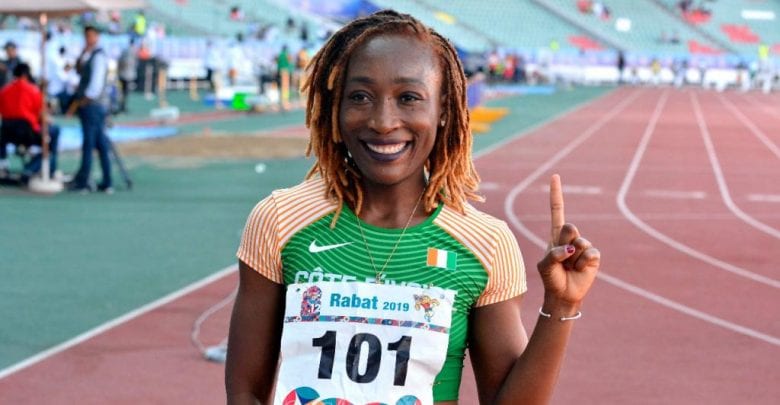
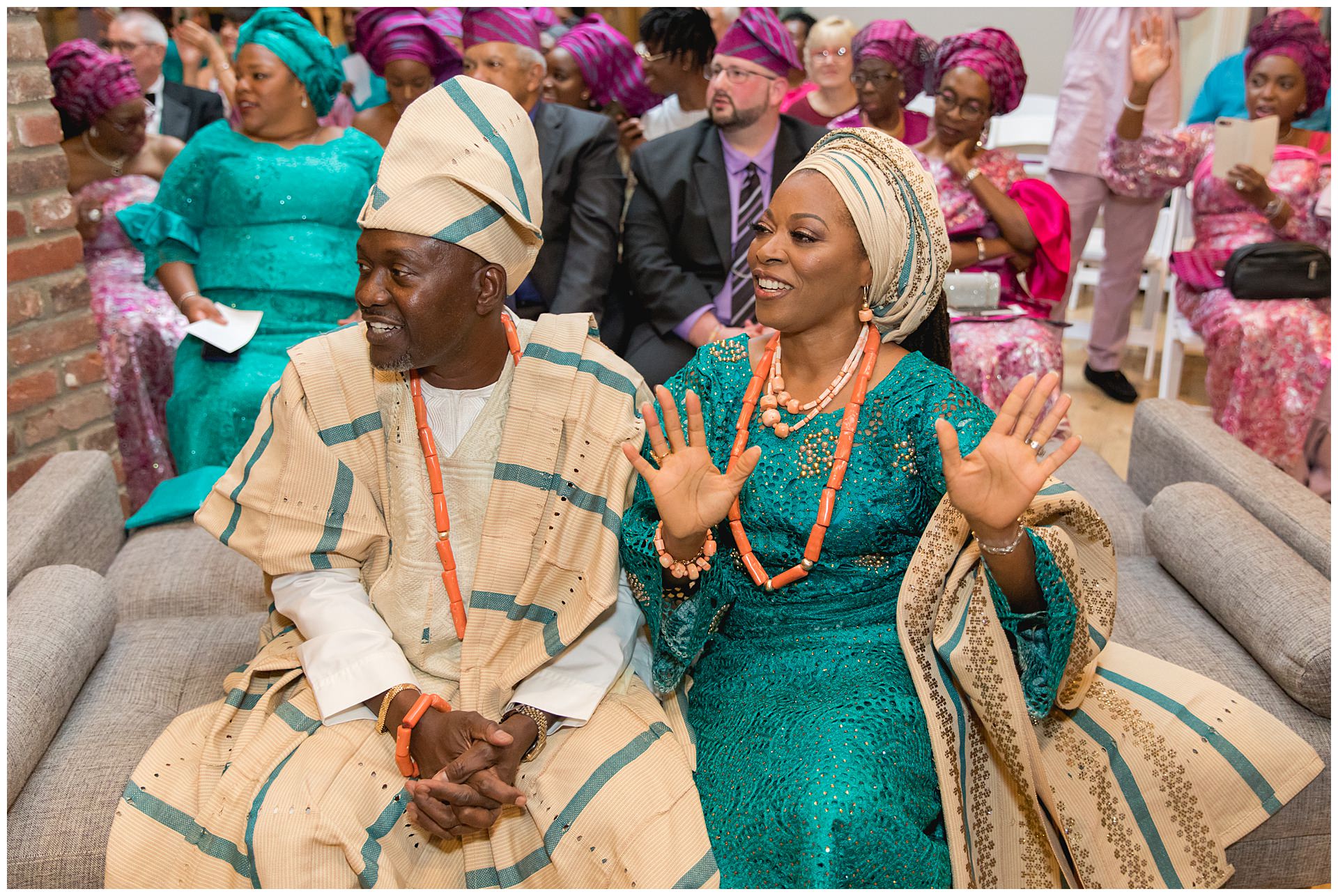

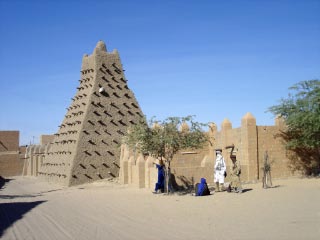


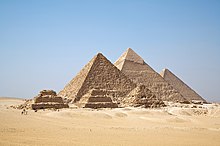


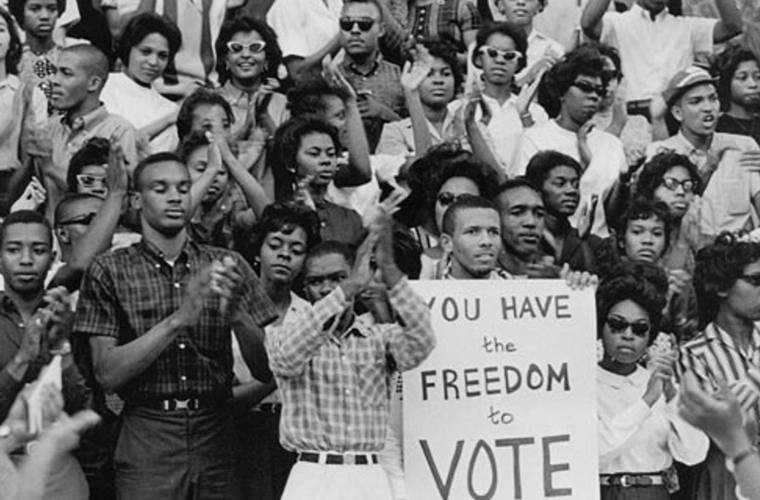
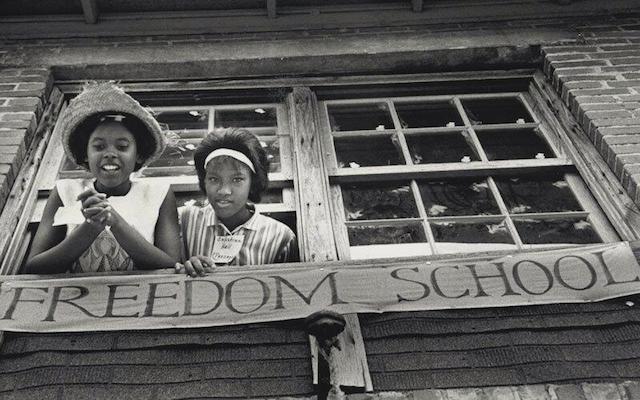

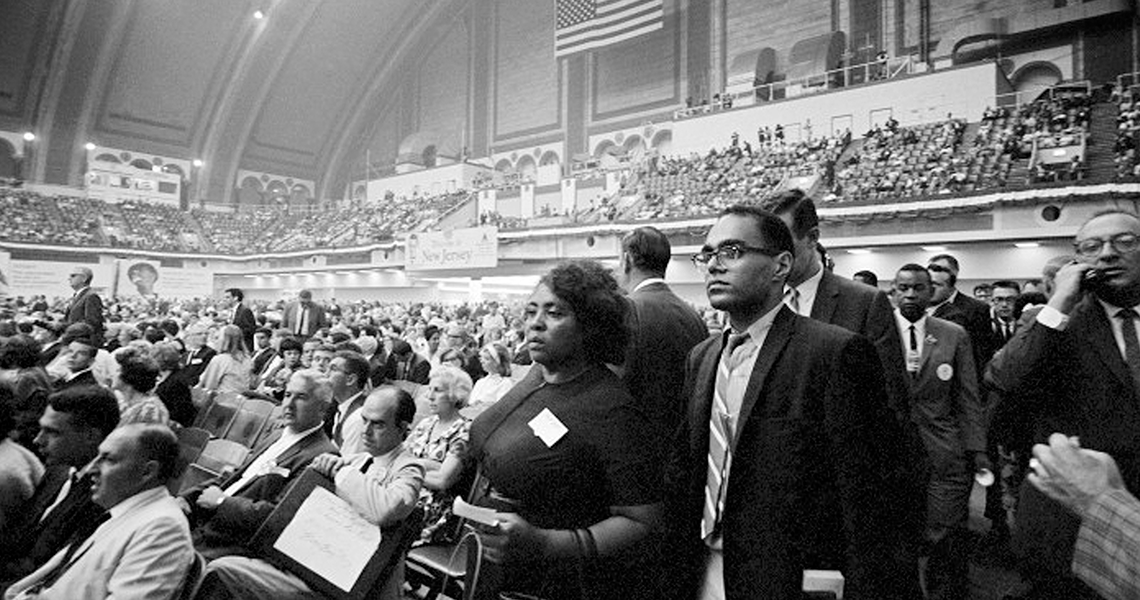

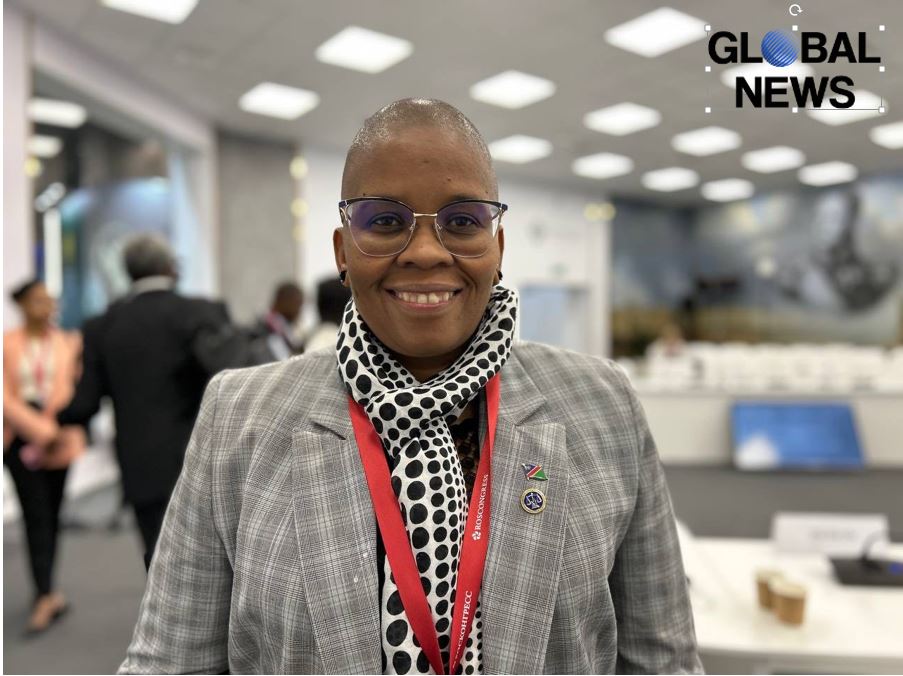
:no_upscale()/cdn.vox-cdn.com/uploads/chorus_asset/file/7116535/AC-20160914-NMAAHC-17828.0.jpg)



No comments:
Post a Comment